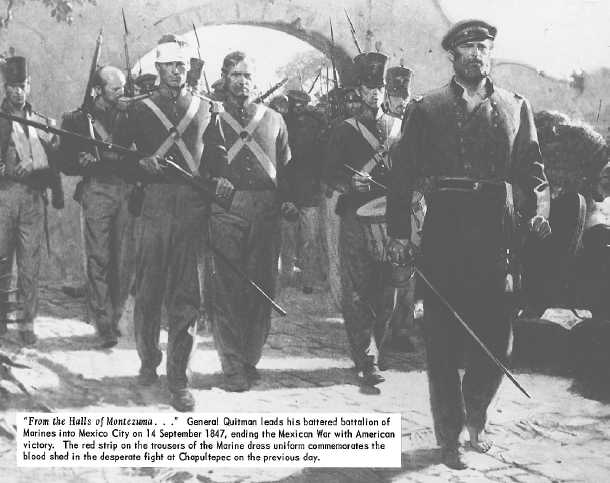| |
134.144
Figure 14-3.-The first lines of the "Marines' Hymn," "From the Halls of Montezuma to the Shores of
Tripoli," commemorate, in reverse chronological, the accomplishments of the Marine Corps in
the Mexican War . . .
of readiness. Its units—which include infantry,
artillery, armor, communications, engineering,
logistics troops, and aviation organizations—must
be completely mobile. The FMF is the nation’s
premier force-in-readiness for all levels of conflict
throughout the world.
Marine forces within each FMF are task-
organized into Marine air-ground task forces
(MAGTFs) for deployment worldwide. The
MAGTF combines air and ground combat forces in
a highly mobile amphibious strike force under a
single commander. All MAGTFs include three
elements: a ground combat element, an aviation
combat element, and a combat service support
element. MAGTFs are task-organized around the
ground combat element—a battalion, regimental,
or division landing team—which may vary in size.
For example, the Marine expeditionary unit
(MEU) numbers 1,800 marines, while the Marine
expeditionary brigade (MEB) may number 16,500
and the Marine expeditionary force (MEF) may
number 35,000.
In late 1985 the 26th Marine amphibious unit
(MAU) was the first MAGTF designated special-
operations capable (SOC). (The amphibious [MAU]
designator changed to expeditionary [MEU] in
1988 to reflect a broader scope in missions.)
Currently, all MEUs that deploy as landing forces
with the Sixth and Seventh fleets are designated
SOC. These special capabilities include short-
notice
amphibious
raids,
evacuation
of
noncombatants, search and rescue operations, and
in-extremis hostage rescue. Forward-deployed
MEU SOCs provide the national command
authority with on-scene forces that can respond
rapidly to terrorist incidents and other crises
worldwide.
14-4
|

